How to judge a good dairy cow
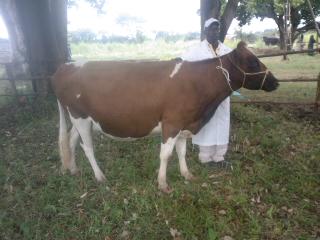
Given a choice between two or more dairy cows, how can you judge a good dairy cow? Selecting the best among a group of dairy cows is what dairy cattle judging is all about. Knowledge of what to look for is key to judging dairy cattle. Here is an insight of how the best dairy cows are judged during the Agricultural Society of Kenya shows.
Parts of a cow considered in judging dairy cattle
Before we get into judging dairy cattle, it is important to familiarize yourself with the parts of a dairy cow as shown in the diagram.
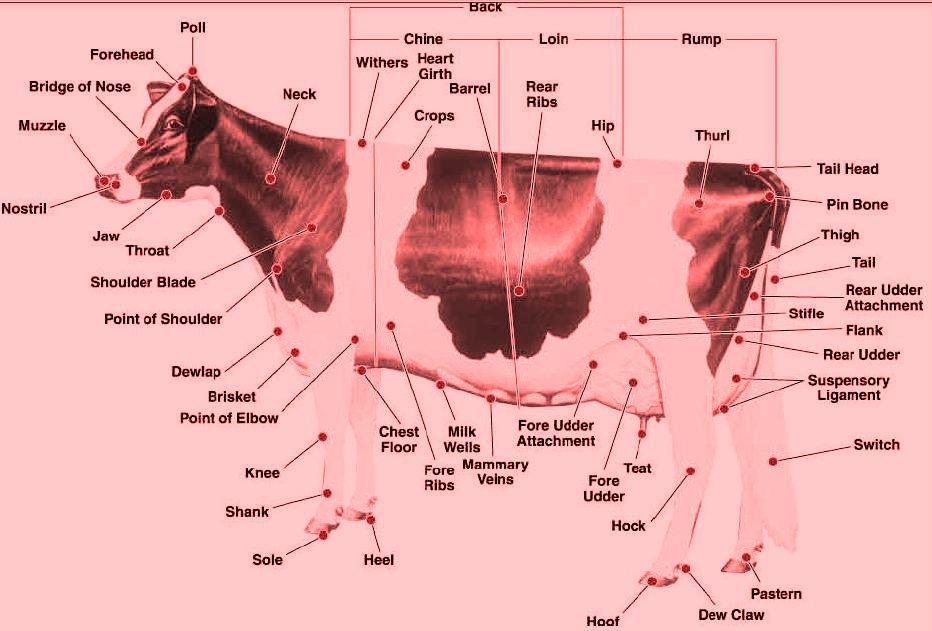
Five main categories are considered in judging a dairy cattle. These are the Frame(15%), Dairy Character(20%), Body Capacity(10%), Rear Feet and Legs(15%) and the most important the Udder(40%). A point to note here is that when compairing two or more dairy cattle we have overlooked the breed types but stuck to categories. This is for illustrative purposes so that the finer points can be clearly seen. The same principles applies to dairy cattle of the same breed and category.
The Frame of the Cow
Internationally this category is awarded a maximum of 15 points. It represents the skeletal structure of the cow with the exception of feet and legs. Important traits are rump, stature, front end, back and breed characteristics in that order. The rump which is the framework for the udder includes the hip (hook), thurls, and pins. A perfect rump should be wide, long and nearly level to create room for udder development. Thurls should be wide apart and pins should be high and wide. Stature is appraised by the height and length of leg bones. Taller animals have their udders high up and therefore are more superior. The front end is evaluated by depth of chest and smooth blending of shoulders to the body wall giving the cow the appearance of harmony, style and balance. Finally the cow should exhibit an overall breed characteristic.
Rump
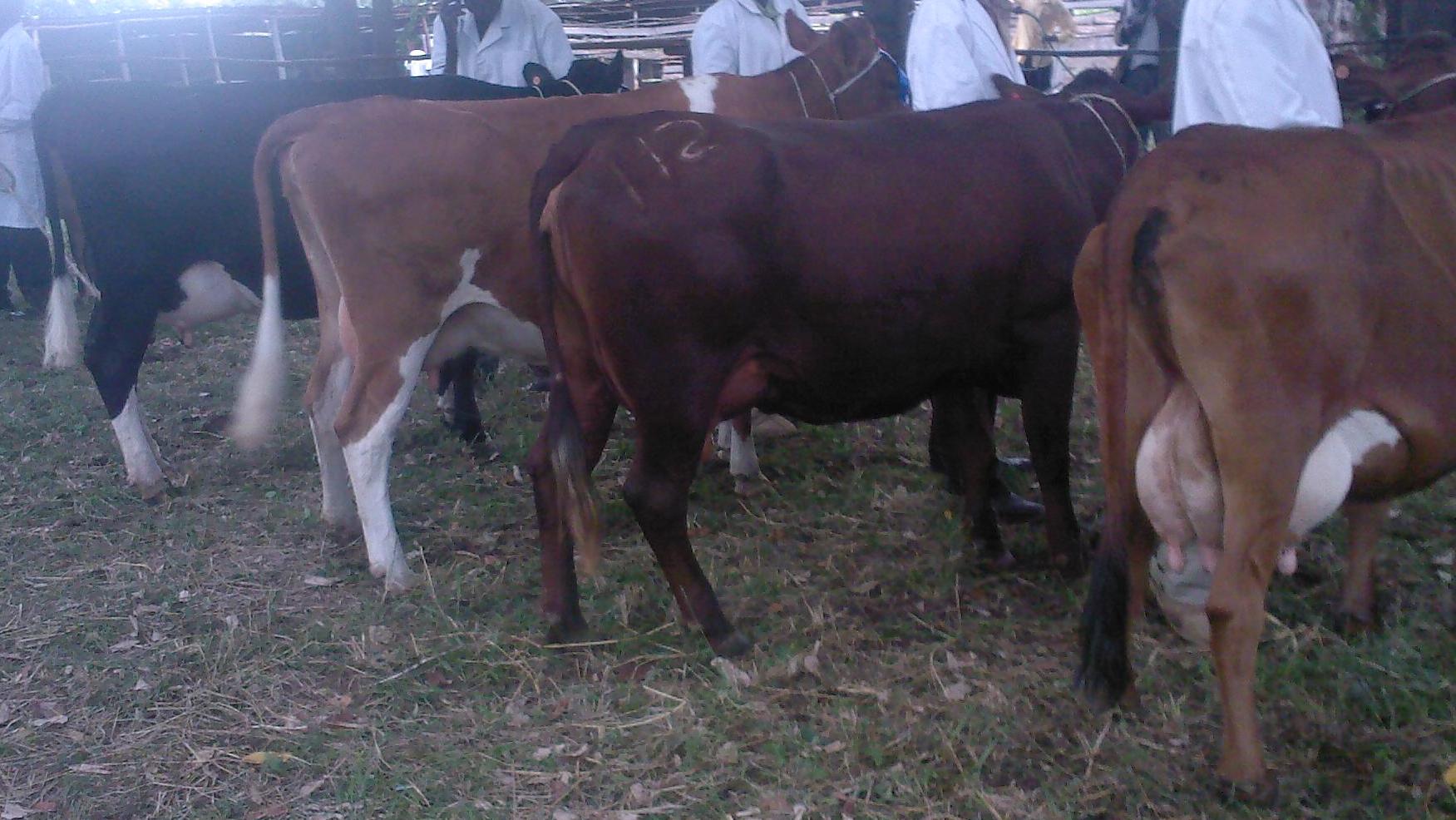
From the observation above, you can notice that the black cow on the far left has a nearly level rump from hips to pins. As you move to the far right the sloping in the rump increases so that by the end of the line the cow on the far right has the most sloping on the rump. The order of superiority is thus from left to right with the left being the most superior in terms of rump conformation.

Going to the rump width, here is a set of the four cows arranged in order from the widest on the left to the narrowest on the right.
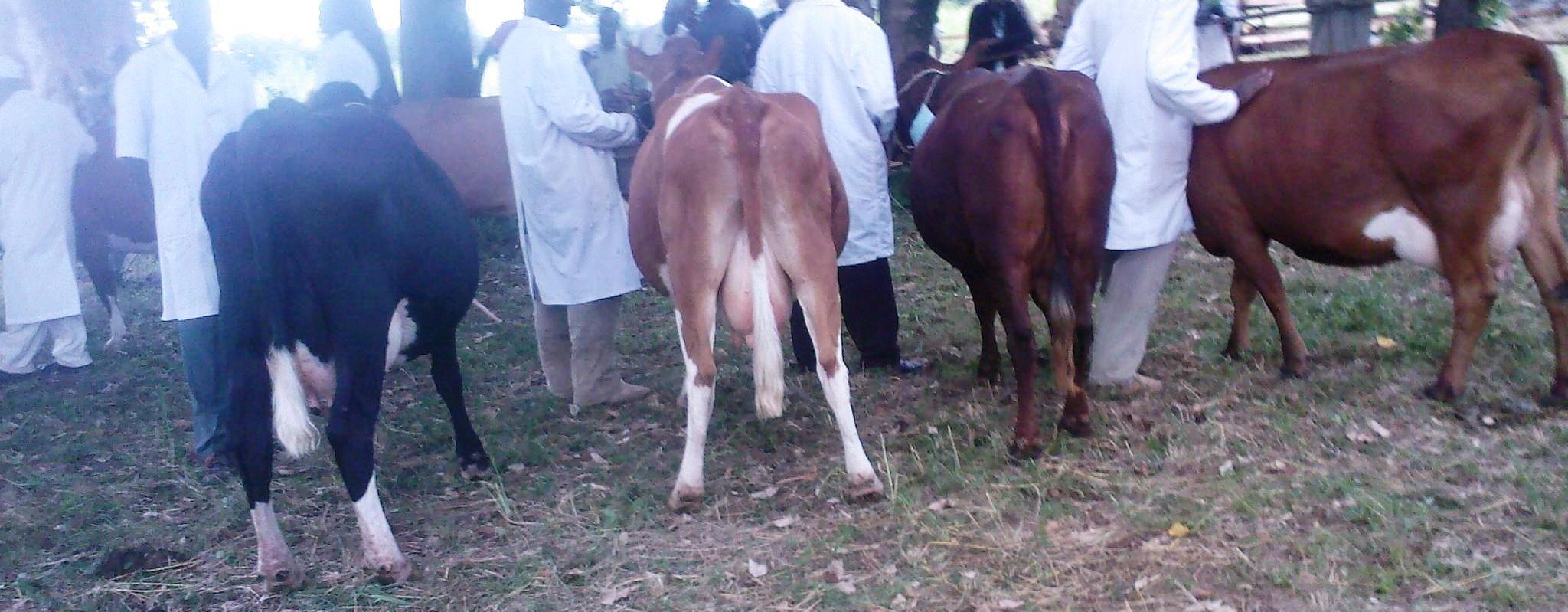

The width of the rump decreases from left to right. The left rump is more superior.
Front end judging of cattle
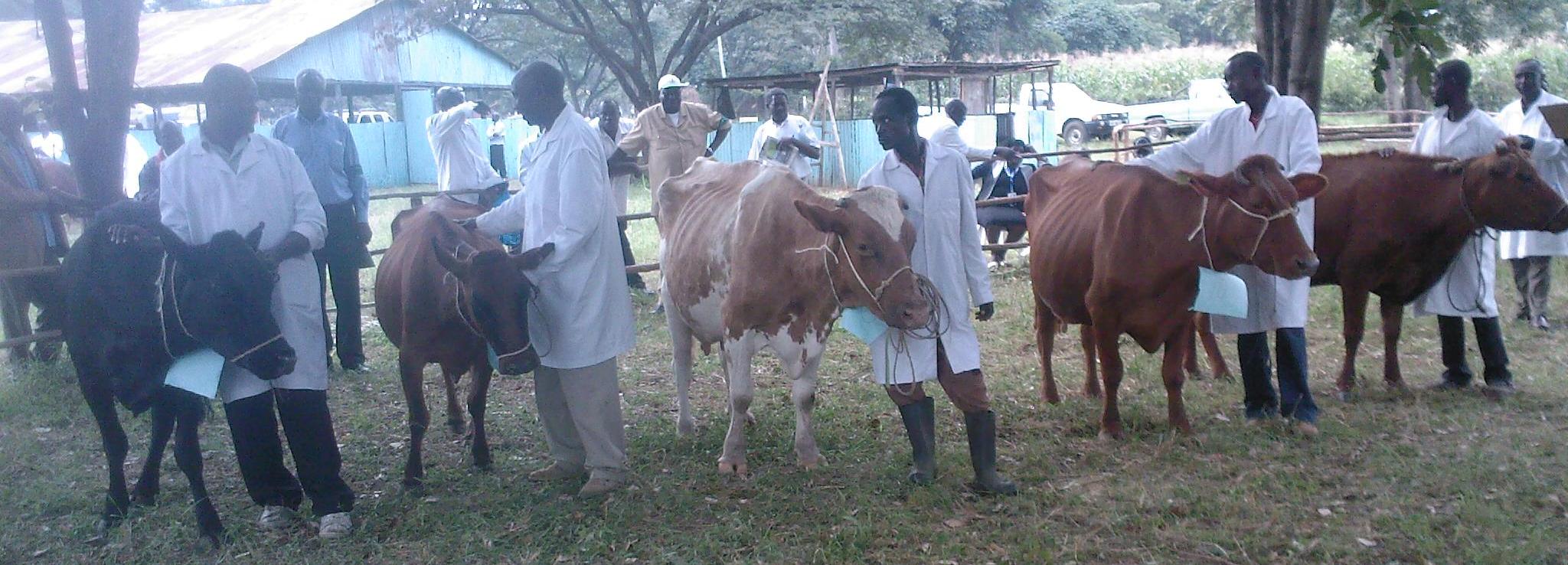
On the front end, the shoulders of the cows on the left are more smoothly attached and blended to the body than the cows as you move to the right.
Back/Loin

The red cow on the extreme left is weak in the loin. The same applies to the third cow from left. But the second cow has a strong topline with a rump that is nearly level from hip to pin.
Dairy Character
This category has a total of 20 points. Here the traits to look for are of a cow that can produce a lot of milk. Such characters as angularity, openness and cleanness are observed from the ribs, thighs, withers, neck and chine, in that order. The ideal dairy cow should have an open rib with a long neck, sharp withers, rump and topline that have no fat. The hip bones and pin bones should be sharply defined. Thighs should be thin and curved in without excess fat and the skin should be thin, loose and pliable.
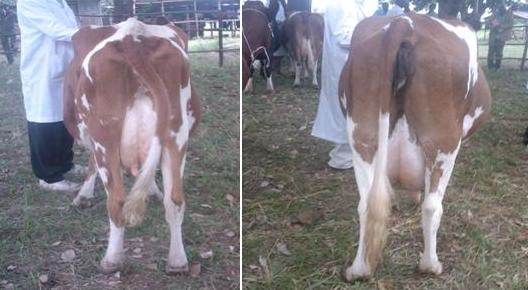
The cow on the left is sharper at the point of the withers.
Body Capacity
Body capacity is usually evaluated out of 10 points. The bigger the size the more capacity for the animal to take in more feed and produce more milk. Capacity is determined by the length, width and depth of the animal. The strength and vigor of the animal are also important. A good dairy cow should have a wide chest with ribs that angle slightly backwards towards the udder, well sprung and deep.
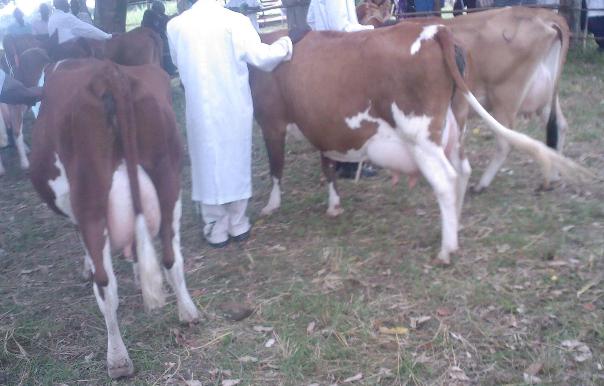
The cow on the left has a deep and wide chest with well sprung fore ribs showing capacity for vital organs. It has more depth of fore and rear ribs.
Feet and Legs
This category is judged out of 15 points. Primarily the feet and legs are evaluated in terms of mobility and strength. A long and fluid stride with the rear feet nearly replacing the front feet is desirable.

The rear legs from the side should have a moderate angle to the hock and on rear view should appear straight, wide apart with feet squarely placed. The hock should be flat without swelling. The pastern should be short and strong with a moderate upright angle.
The Udder
Being the most important part of a dairy cow the udder is awarded out of 40 points. Traits that contribute to high milk yield and long productive lifespan are emphasized. The mammary system is considered. The udder must be strongly attached, have acceptable size and capacity, well balanced and symmetrical. The skin should be soft, pliable, and loose.
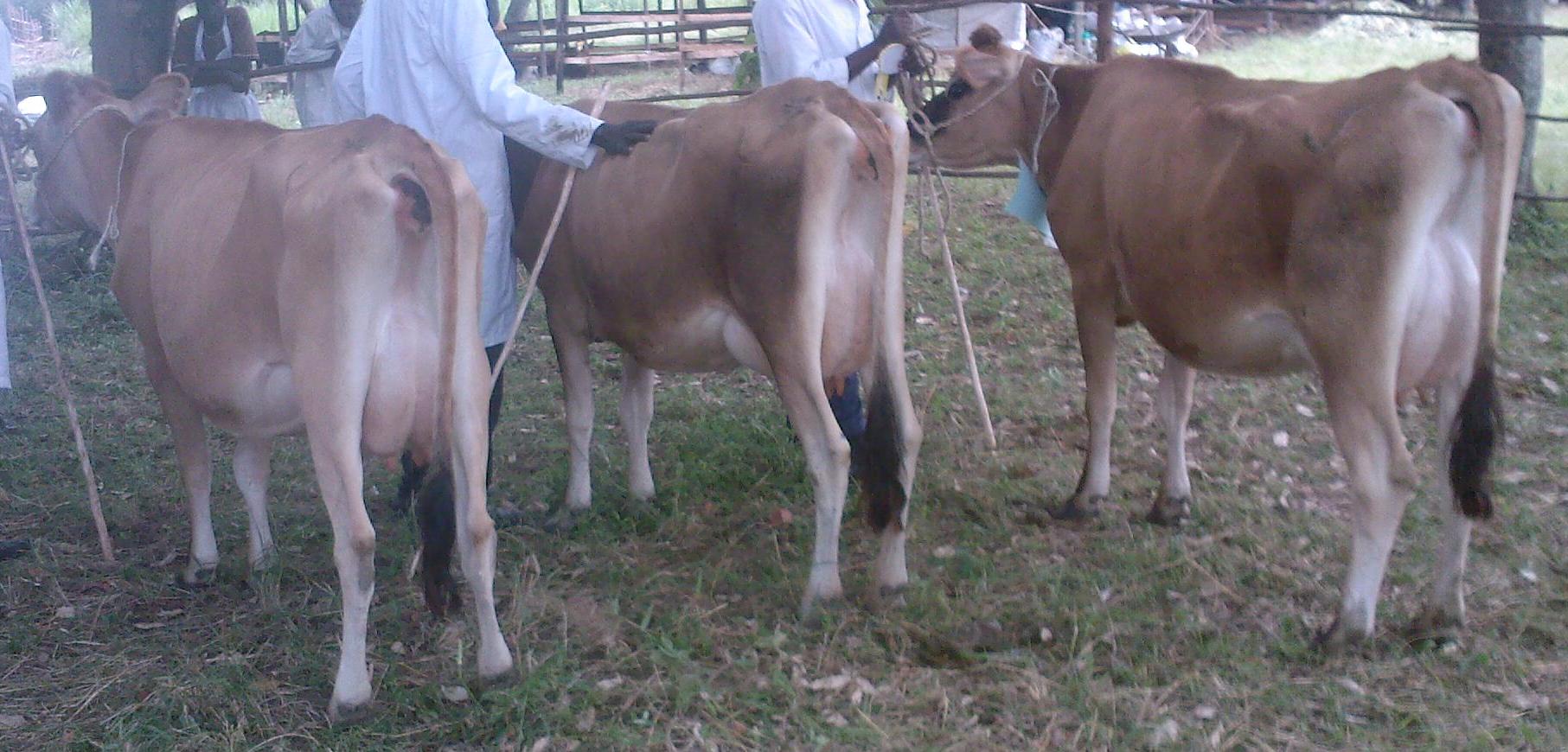
Udder depth
An udder with an adequate capacity and clearance with a moderate depth relative to the hock is important. The udder should be nearly level on the floor, and there should be no signs of quartering. Large mammary veins are evidence of an excellent quality udder.

Consideration is given to an animal’s age and stage of lactation when evaluating udder capacity. As the cow grows older, her udder becomes deeper and larger. If the udder hangs below the hocks when a cow is under 5 years old, it should be discriminated.
Rear udder
The rear udder attachment should be wide and high, firmly attached and uniform width from top to bottom, and slightly rounded to udder floor.
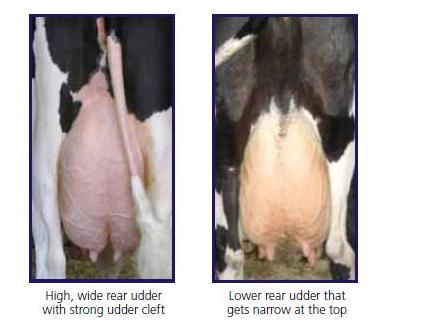
Udder cleft
The median and lateral suspensory ligaments are the main support for the udder. The median suspensory ligament is located between the halves of the udder, and the lateral ligaments are located on the sides of the udder. Udders with weak ligaments hang well below the hocks. Weak median suspensory ligaments cause the udder floor to be flat, and there will be no cleft between the quarters. A weak median suspensory ligament generally causes teats to point out, making the cow difficult to milk.
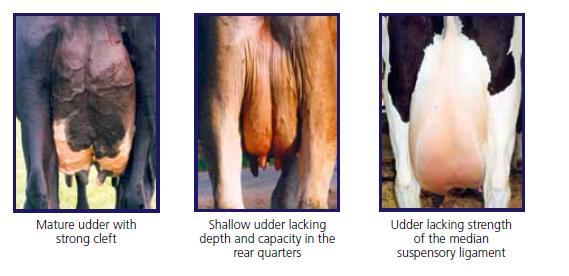
Fore udder
The fore udder should be moderately long, strongly attached, and blend smoothly into the body wall. It should be uniformly wide from front to rear and be balanced with the rear udder. The udder should have little movement when the cow is walking.

Teats
The teats should be of uniform size and shape and medium sized (1½ to 2½ inches long). They should be placed squarely under the corners of the udder, pointed slightly inward before the udder is filled, and hang straight down when the udder is full.
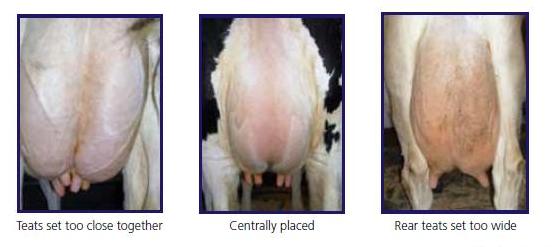




Comments
RSS feed for comments to this post